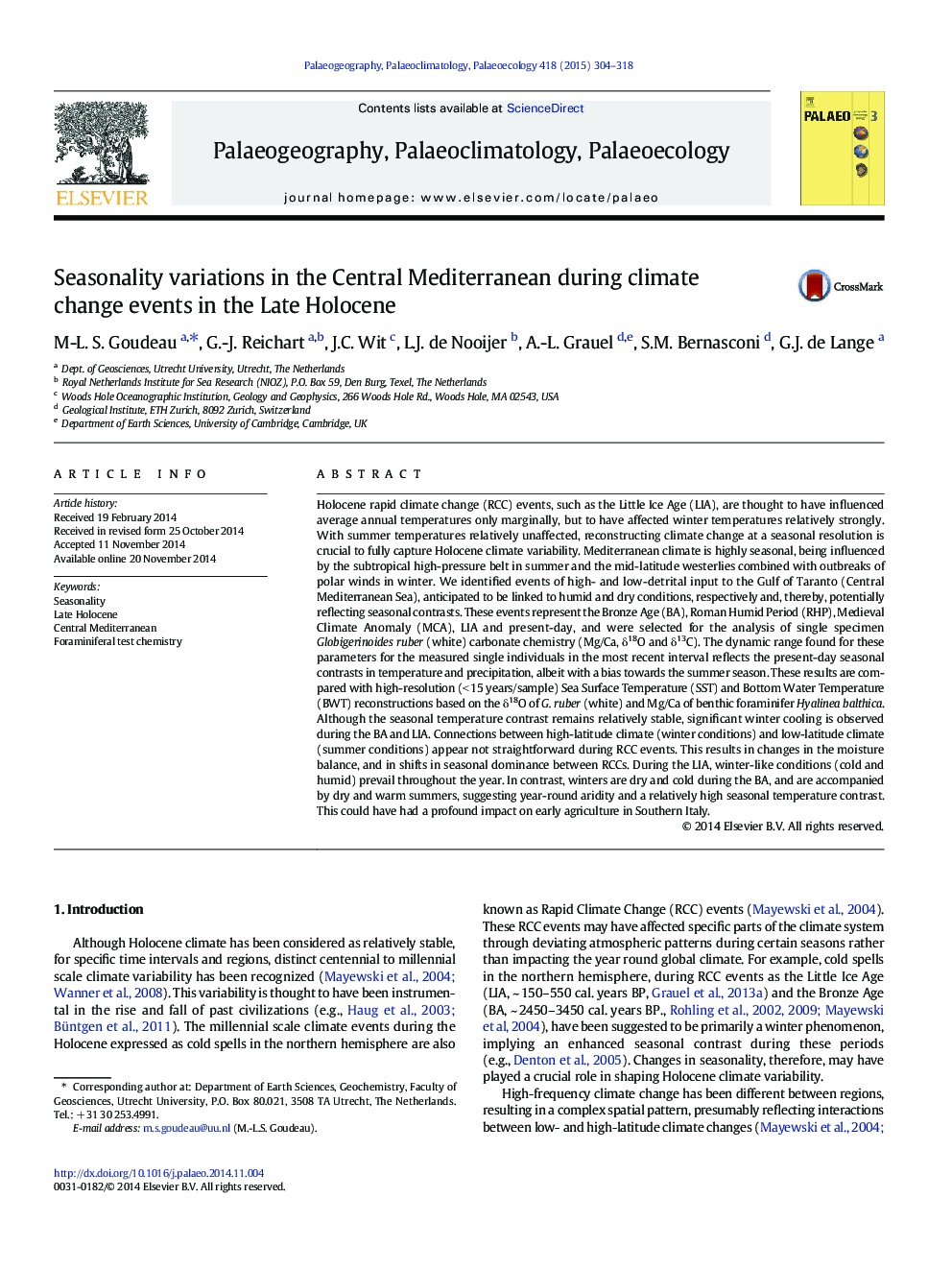| کد مقاله | کد نشریه | سال انتشار | مقاله انگلیسی | نسخه تمام متن |
|---|---|---|---|---|
| 6349821 | 1622172 | 2015 | 15 صفحه PDF | دانلود رایگان |
- Reconstruction of seasonality using foraminiferal test chemistry of single specimen
- Combined high resolution reconstruction (<Â 15Â years) of seasonal SSTs and BWT
- Similar seasonality as today, except during the Little Ice Age and Bronze Age
- Little Ice Age: cold and wet, winter-like conditions throughout the year
- Bronze Age: year-round aridity and a high annual range in temperature
Holocene rapid climate change (RCC) events, such as the Little Ice Age (LIA), are thought to have influenced average annual temperatures only marginally, but to have affected winter temperatures relatively strongly. With summer temperatures relatively unaffected, reconstructing climate change at a seasonal resolution is crucial to fully capture Holocene climate variability. Mediterranean climate is highly seasonal, being influenced by the subtropical high-pressure belt in summer and the mid-latitude westerlies combined with outbreaks of polar winds in winter. We identified events of high- and low-detrital input to the Gulf of Taranto (Central Mediterranean Sea), anticipated to be linked to humid and dry conditions, respectively and, thereby, potentially reflecting seasonal contrasts. These events represent the Bronze Age (BA), Roman Humid Period (RHP), Medieval Climate Anomaly (MCA), LIA and present-day, and were selected for the analysis of single specimen Globigerinoides ruber (white) carbonate chemistry (Mg/Ca, δ18O and δ13C). The dynamic range found for these parameters for the measured single individuals in the most recent interval reflects the present-day seasonal contrasts in temperature and precipitation, albeit with a bias towards the summer season. These results are compared with high-resolution (< 15 years/sample) Sea Surface Temperature (SST) and Bottom Water Temperature (BWT) reconstructions based on the δ18O of G. ruber (white) and Mg/Ca of benthic foraminifer Hyalinea balthica. Although the seasonal temperature contrast remains relatively stable, significant winter cooling is observed during the BA and LIA. Connections between high-latitude climate (winter conditions) and low-latitude climate (summer conditions) appear not straightforward during RCC events. This results in changes in the moisture balance, and in shifts in seasonal dominance between RCCs. During the LIA, winter-like conditions (cold and humid) prevail throughout the year. In contrast, winters are dry and cold during the BA, and are accompanied by dry and warm summers, suggesting year-round aridity and a relatively high seasonal temperature contrast. This could have had a profound impact on early agriculture in Southern Italy.
Journal: Palaeogeography, Palaeoclimatology, Palaeoecology - Volume 418, 15 January 2015, Pages 304-318
